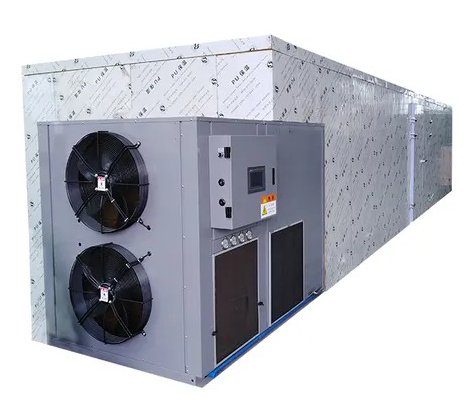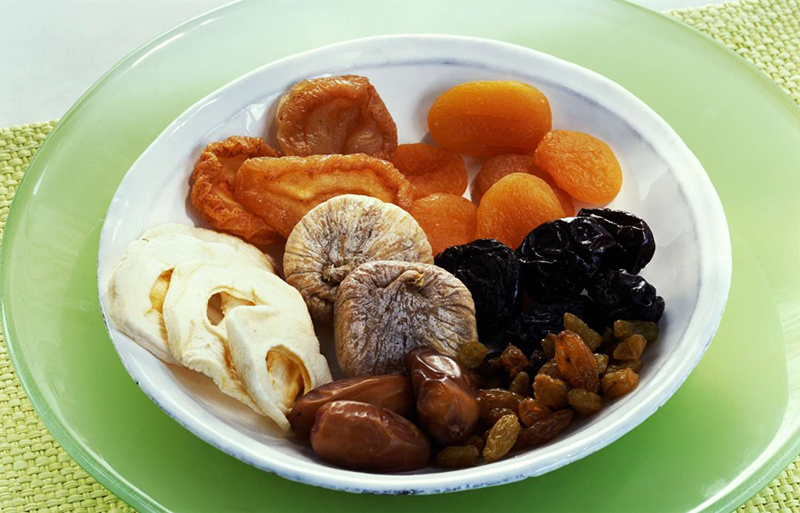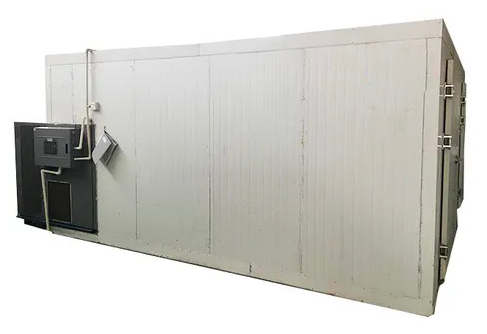
Content Menu
● Understanding Food Dehydrators
>> How Food Dehydrators Work
● Benefits of Using a Food Dehydrator
● Types of Food Dehydrators
● Choosing the Right Food Dehydrator
● Popular Uses for Food Dehydrators
● Costco's Heat Pump Dryers
>> Comparison Table: Heat Pump Dryers vs. Traditional Dryers
● Advantages of Heat Pump Dryers
● Potential Drawbacks of Heat Pump Dryers
● Conclusion
● FAQ
>> 1. What foods can I dehydrate using a food dehydrator?
>> 2. How long does it take to dehydrate food?
>> 3. Can I use my oven instead of a dehydrator?
>> 4. Are heat pump dryers worth the investment?
>> 5. How do I clean my food dehydrator?
● Citations:
Food dehydrators have become increasingly popular among home cooks and food enthusiasts, offering a convenient way to preserve fruits, vegetables, and meats without the need for preservatives. This article explores the functionality, benefits, and considerations of food dehydrators, with a particular focus on heat pump technology and its reliability, akin to the heat pump dryers available at Costco.

Understanding Food Dehydrators
A food dehydrator is an appliance designed to remove moisture from food, thereby extending its shelf life and enhancing its flavor. The process involves circulating warm air around the food at low temperatures, typically between 85°F and 160°F. This method preserves the nutritional content of the food better than other preservation techniques such as canning or freezing.
How Food Dehydrators Work
- Heating Element: The dehydrator contains a heating element that raises the temperature inside the unit, which is crucial for drawing out moisture from the food.
- Airflow: A fan circulates warm air evenly throughout the dehydrator. This airflow is essential for uniform drying and preventing spoilage.
- Trays: Food is placed on trays or racks that allow air to circulate freely around it, facilitating even dehydration.
- Temperature Control: Most modern dehydrators come with adjustable temperature settings and timers, allowing users to customize the dehydration process according to the type of food being preserved.
Benefits of Using a Food Dehydrator
Using a food dehydrator offers several advantages:
- Nutritional Preservation: Dehydration retains most vitamins and minerals in fruits and vegetables compared to other preservation methods.
- Extended Shelf Life: Dehydrated foods can last significantly longer than fresh counterparts, making them ideal for long-term storage and reducing food waste.
- Flavor Enhancement: The dehydration process concentrates flavors, resulting in more intense tastes in dried foods.
- Energy Efficiency: Dehydrators are generally more energy-efficient than conventional ovens. For instance, running a 1000W dehydrator for 12 hours consumes significantly less power than a 5000W convection oven.
- Convenience: With a dehydrator at home, you can easily prepare snacks like dried fruits or jerky at your convenience without relying on store-bought options that may contain preservatives or additives.
Types of Food Dehydrators
Food dehydrators vary widely in design and functionality. Here are some common types:
- Stackable Tray Dehydrators: These are compact units with multiple trays stacked on top of each other. They are often more affordable but may have uneven drying due to airflow limitations.
- Box Style Dehydrators: These feature a horizontal airflow design that allows for more consistent drying across all trays. They tend to be larger and more expensive but offer better performance.
- Commercial Dehydrators: Designed for high-volume use, these units can handle large batches of food at once and are equipped with advanced features for precise control over drying conditions.
Choosing the Right Food Dehydrator
When selecting a food dehydrator, consider factors such as:
- Capacity: Choose a size that fits your needs. Larger units are better for bulk drying, while smaller ones are suitable for occasional use.
- Temperature Control: Look for models with adjustable temperature settings to accommodate different types of foods.
- Ease of Cleaning: Removable, dishwasher-safe trays make cleanup easier.
- Noise Level: Some dehydrators can be noisy; consider this if you plan to use it frequently.
- Brand Reputation: Opt for established brands known for quality and durability. Research customer reviews to gauge reliability and performance over time.

Popular Uses for Food Dehydrators
Food dehydrators can be used in various culinary applications beyond simple preservation. Here are some popular uses:
- Making Jerky: One of the most popular uses for food dehydrators is making jerky from beef, turkey, or even fish. The process involves marinating the meat first before slicing it thinly and placing it in the dehydrator until fully dried.
- Creating Dried Fruits: Fruits such as apples, bananas, peaches, and strawberries can be sliced and dried into healthy snacks. Dried fruits are great additions to cereals, trail mixes, or eaten alone as a nutritious snack.
- Vegetable Chips: You can create your own vegetable chips by slicing vegetables like sweet potatoes or kale thinly and seasoning them before dehydration. These chips serve as a healthier alternative to store-bought snacks.
- Herbs and Spices: Fresh herbs can be dried in a dehydrator to create your own spice blends or seasonings. This not only preserves their flavor but also allows you to have fresh herbs year-round regardless of seasonality.
Costco's Heat Pump Dryers
While this article primarily focuses on food dehydrators, it is worth noting that heat pump dryers available at Costco have gained attention for their efficiency and reliability. These dryers utilize heat pump technology to dry clothes without venting hot air outside. Instead, they recycle hot air within the drum, making them more energy-efficient than traditional dryers.
Comparison Table: Heat Pump Dryers vs. Traditional Dryers
| Feature | Heat Pump Dryers | Traditional Dryers |
| Energy Efficiency | High (uses less electricity) | Moderate to Low |
| Drying Time | Longer (up to 2-3 hours) | Shorter (typically 30-60 minutes) |
| Operating Temperature | Lower (gentler on fabrics) | Higher (can shrink fabrics) |
| Ventilation Requirement | None (ventless operation) | Requires external venting |
Advantages of Heat Pump Dryers
Heat pump dryers offer several advantages that make them appealing:
- Energy Savings: By recycling air instead of generating new heat continuously, heat pump dryers consume far less energy compared to traditional dryers. This efficiency translates into lower utility bills over time.
- Gentle on Fabrics: The lower drying temperatures help prevent damage to delicate fabrics, reducing wear and tear over time compared to high-temperature drying methods.
- Versatile Installation Options: Since they do not require external venting, heat pump dryers can be installed in various locations within your home without worrying about ductwork or venting requirements.
Potential Drawbacks of Heat Pump Dryers
Despite their benefits, heat pump dryers may have some drawbacks:
- Longer Drying Times: While they are energy-efficient, heat pump dryers typically take longer to dry clothes compared to conventional models due to their lower operating temperatures.
- Higher Initial Cost: The upfront cost of purchasing a heat pump dryer is generally higher than traditional dryers; however, this cost can be offset by energy savings over time.
Conclusion
Food dehydrators provide an excellent solution for preserving food while maintaining nutritional value and flavor. They are energy-efficient appliances that cater to various needs—from casual home cooks to serious culinary enthusiasts. As for heat pump dryers available at Costco, they offer a reliable alternative to traditional dryers by providing energy efficiency and gentler drying conditions.
In summary, whether you are considering investing in a food dehydrator or a heat pump dryer, understanding their functionalities and benefits will help you make an informed decision. Both appliances reflect advancements in technology that prioritize efficiency while catering to consumer needs—whether it's preserving food or ensuring laundry is dried effectively without damaging fabrics.

FAQ
1. What foods can I dehydrate using a food dehydrator?
You can dehydrate various foods including fruits (like apples and bananas), vegetables (such as tomatoes and bell peppers), herbs, and meats (like jerky).
2. How long does it take to dehydrate food?
The time required varies depending on the type of food and thickness of slices but generally ranges from 6 to 24 hours.
3. Can I use my oven instead of a dehydrator?
While you can use an oven at low temperatures, it is less efficient than a dedicated dehydrator due to uneven heat distribution and higher energy consumption.
4. Are heat pump dryers worth the investment?
Yes, heat pump dryers are energy-efficient and gentle on clothes; they may have longer drying times but save electricity in the long run.
5. How do I clean my food dehydrator?
Most models have removable trays that can be washed in the dishwasher; wipe down the interior with a damp cloth after each use to keep it clean.
Citations:
[1] https://www.webstaurantstore.com/guide/741/food-dehydrators-buying-guide.html
[2] https://etsolutions.in/how-does-a-food-dehydrator-work-explore-the-benefits-of-food-dehydrators/
[3] https://community.waring.com/blog/p/13or1/the-remarkable-benefits-of-adding-a-food-dehydrator-to-your-kitchen-arsenal
[4] https://www.thespruceeats.com/best-food-dehydrators-4077285
[5] https://www.callmelore.com/fool-proof-healthy-dehydrator-recipes/
[6] https://www.reddit.com/r/PassiveHouse/comments/1avjk7w/looking_for_experiences_with_heat_pump_dryers/
[7] https://www.consumerreports.org/appliances/washing-machines/buy-a-matching-washer-and-dryer-at-costco-a8132876401/
[8] https://en.wikipedia.org/wiki/Food_dehydrator
[9] https://www.canr.msu.edu/resources/dehydrating-produce-basics
[10] https://www.mumsnet.com/talk/_chat/4722913-any-experiences-of-heat-pump-tumble-dryers-please











